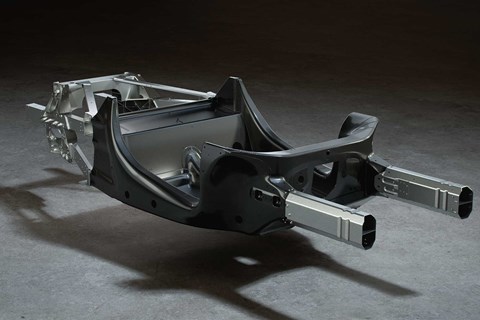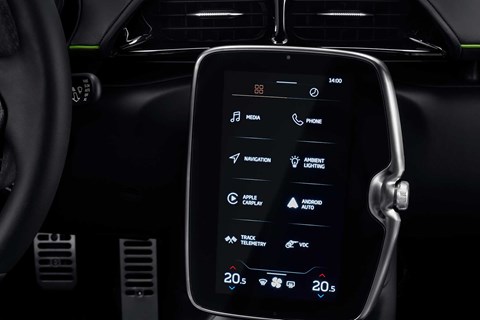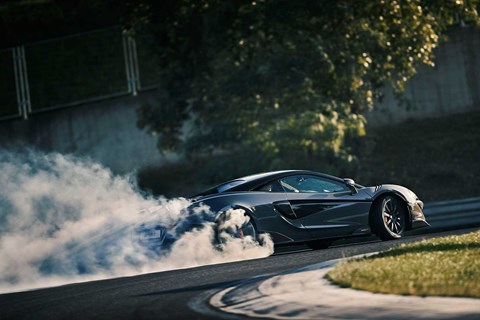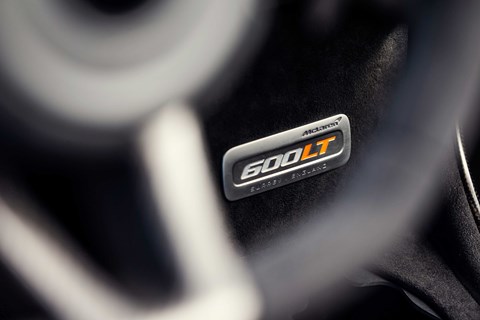► McLaren kicks off SUV project
► Electric-power only
► Lightweight structure
McLaren Automotive has begun developing an SUV, under the leadership of new CEO Michael Leiters. More big news: the family McLaren will be the brand’s first pure electric vehicle.
But it’ll be true to the McLaren DNA with a lightweight construction (compared with other SUVs), big performance and exciting dynamics. Car exclusively spoke to McLaren’s new boss to get a sense of his philosophy and the supercar-maker’s new direction.
An SUV! That’s a huge change for McLaren
Under previous CEO Mike Flewitt, McLaren was as ideologically opposed to SUVs as Conservative party hardliners were to a soft Brexit. New McLaren Automotive CEO Michael Leiters – an engineer formerly at Porsche and Ferrari – has no such misgivings, as he launches a turnaround strategy to help loss-making McLaren recover from the Covid and supply chain nightmare.
 Michael Leiters, shot for Car November 2022 by Sam Chick
Michael Leiters, shot for Car November 2022 by Sam Chick
‘I’m totally convinced this company can be profitable,’ says Leiters. ‘It can be profitable with a streamlined version of today’s line-up. But I think it can be even more profitable if we think also about new segments and new car concepts.’
Are McLaren’s customers asking for a car for family use? ‘Yes,’ replies the 51-year-old engineer. ‘This is an effect every [successful] brand has, a customer is falling in love with your product. Why shouldn’t you offer something for a totally different purpose without negating your brand DNA? I think there are very, very good examples in the market which have shown how it works.’
Leiters has first-hand knowledge of some credible luxury crossovers: he was vehicle line director for Porsche SUVs, and the chief technology officer who delivered the Purosangue for Ferrari.
 Ferrari’s Purosangue crossover, developed with Leiters as Ferrari CTO
Ferrari’s Purosangue crossover, developed with Leiters as Ferrari CTO
For our full Michael Leiters interview, click through to Car’s app browser – or pick up the November 2022 issue out 12 October
Can McLaren deliver a lightweight SUV?
Leiters is adamant that a crossover has to be true to McLaren’s values – and that means lightweight construction. The new boss is hugely impressed with McLaren’s Composite Technology Centre on the outskirts of Sheffield – ‘world-class’ he says – and he’s kicked off a study to assess how its development and manufacturing processes can be revised to produce bigger carbonfibre structures.
‘This is something I would like to do understand with the team, how flexible we can be to vary actual products or to create new products. Definitely we will develop our technology and product roadmap to understand what investment is necessary.’
 The McLaren Artura’s composite tub with aluminium crash structures
The McLaren Artura’s composite tub with aluminium crash structures
One thing’s for sure: a McLaren crossover will extensively deploy composites. ‘There has to be an important element of carbonfibre to be credible with our brand,’ states the boss. ‘[A big McLaren] has to be lightweight. And carbon fibre is one of the best ways to do lightweight.’
At this early stage it’s unclear whether the structure would be overwhelmingly a carbonfibre monocoque, as with today’s McLaren supercars. The company is considering a hybrid structure, as used by BMW’s i3 EV and i8 hybrid sports car, which blended a carbonfibre upper body with an aluminium chassis. The new Artura has aluminium crash structures at both ends of its composite monocell.
Crossover to be McLaren’s first pure electric car
McLaren is no stranger to electrified cars: the P1 hypercar, 250mph Speedtail and new V6 Artura all deploy hybrid power. But the crossover is almost certain to be its first pure electric car – especially because Michael Leiters has a clear position on whether a McLaren supercar could be powered by today’s lithium-ion batteries.
‘I could [do it] but it’s not a convincing product because weight is too high. [Impressive] longitudinal acceleration with battery cars is not a problem: you can have that in a limousine or an SUV with 1000kw [of power].’
McLaren is likely to use the tried and tested formula for packaging battery cells: embedding them beneath the passenger space for a low centre of gravity. BMW supplies the cells for the Artura supercar, and there have been discussions about extending its supply deal – but sources say that’s a long shot. The company is putting out its feelers to other tech companies and OEMs to strike up the right partnership.
 McLaren Artura’s hybrid drivetrain, with battery cells from BMW
McLaren Artura’s hybrid drivetrain, with battery cells from BMW
New cutting-edge electronic architecture
Software issues delayed sales of the new Artura, with a painful impact on the company’s finances. But Leiters thinks that downside will swiftly be eclipsed by the potential it unlocks, putting McLaren ‘five years ahead’ of its rivals in software.
 McLaren Artura electronics brings new connected features
McLaren Artura electronics brings new connected features
Naturally EVs need to be connected for real-time range management, and for over the air updates to bring new features. But the new software will bring big benefits in a key area for McLaren: dynamics.
‘With an EV, it’s even more important to have a connected car, to have good control systems to use all the potential you have with electric motors,’ says the CEO.
The software could control the electric crossover’s power delivery to make it feel less sledgehammer instant, building it in a linear way like a combustion engine.
There’s a strong likelihood the crossover will be all-wheel drive. So McLaren will redefine its Variable Drift Control for electric cars, giving immense control over torque delivery to each wheel, acting like an e-diff to boost the dynamic envelope.
 New electronic architecture will take Variable Drift Control into a new dimension
New electronic architecture will take Variable Drift Control into a new dimension
‘Software controls in vehicle dynamics and so on, we have to do it in house,’ states Leiters. ‘And this architecture allows us to do these things flexibly and very quickly, independent of outside partners.’
New design direction and naming strategy
Branching out into new bodystyles gives McLaren design a great opportunity for a new direction. ‘We haven’t differentiated our cars sufficiently from a visual standpoint,’ is the new CEO’s verdict.
Along with weight, aerodynamics is a key battleground where McLaren should have an edge. The group’s F1 expertise will help hone the crossover’s aero, to ensure the EV has the right balance of range and performance.
It’s likely to get a new name too: Leiters thinks the current number-based strategy is too confusing, with different model lines’ power outputs overlapping.
 Michael Leiters will overhaul McLaren’s numeric-alpha naming convention
Michael Leiters will overhaul McLaren’s numeric-alpha naming convention
Where will the McLaren crossover be assembled?
Another critical decision will be where to build the crossover. The McLaren Production Centre, adjacent to the group’s Woking R&D base, is geared up to build around 6000 supercars a year.
The crossover would likely double McLaren’s volume, so a new manufacturing facility is crucial. Jaguar outsourced production of its iPace EV to Magna Steyr in Austria, and it’s likely McLaren will have to find a partner to make its crossover a reality. If everything falls into place, the ground-breaking McLaren could be on the market in 2026.